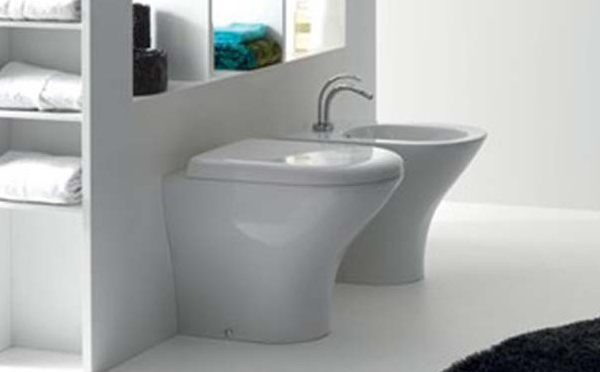Flush-to-wall sanitary fixtures are undoubtedly the most suitable sanitary fixtures for those undertaking a bathroom renovation project. These can easily adapt to any type of system, especially those with floor drainage, but how exactly do they do it?
In this article we are going to look inside the back-to-wall sanitary ware with floor drain, to understand how they work and how they can easily adapt to the pre-existing environment.
Back to wall sanitary fixtures with floor drain: the section
To begin, let’s analyze a section of a flush-to-the-wall sanitary ware with floor drain.
As you can see from the photo above, the flush-to-wall toilet requires a drain curve in order to obtain the so-called floor drain.
The drain curves are elements made of ultra-resistant plastic material that connect the ceramic of the toilet to the actual drain.
Depending on the distance of the drain from the toilet, you may need one or more special drain elbows, they are generally supplied by the plumber or you can buy them yourself together with the sanitary fixtures.
Back to wall sanitary ware with floor drain: the advantages
This simple system allows you to enjoy several benefits at the same time.
The main advantage is that of being able to definitively abandon the old traditional sanitary ware, which left a large unused space between the toilet and the wall.
A flush-to-the-wall sanitary fixture also helps you with cleaning, eliminating that unused space where dirt and dust used to accumulate.
Finally, a flush-to-the-wall sanitary ware can also be adapted, if necessary, to a wall drain, simply opting for a specific technical curve, generally a straight sleeve.
